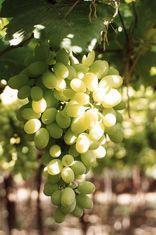
The fate of hundreds of containers of Indian grapes hung in the balance this week, following an alert from the Indian ambassador to the EU that growth retardant chlormequat had been used on the crop.
Although the substance is not banned in the EU, it is not authorised for use on grapes and the issue has thrown up important questions about non-compliance.
The European Commission’s directorate general for health and consumers, DG Sanco, asked the European Food Safety Authority (EFSA) to carry out a risk assessment.
EFSA found that if the concentration of chlormequat on grapes does not exceed the threshold of 1.06mg/kg, no acute consumer health risk is expected.
The whole issue is of great concern to the trade, as it has highlighted a loophole where the commission has put the onus on individual member states’ pesticide regulation bodies to decide whether to send back consignments that have levels of chlormequat detected below 1.06mg/kg, but above the default 0.05mg/kg maximum residue level set for non-authorised use.
The Fresh Produce Consortium is working hard on the trade’s behalf in the UK, liaising with the Chemicals Regulation Directorate (CRD) and pressing for a swift, pragmatic decision. But so far the CRD has issued the following statement: “Stocks containing residues in exceedance of the established MRL cannot be lawfully marketed. However, given EFSA’s assessment... no action will be taken by UK enforcement authorities to retrieve or dispose of current stocks. Distributors and retailers should ensure that no further stocks of Indian grapes in exceedance of the MRL are placed on the UK market.”
One importer said the situation for the grape market is dire. He told FPJ: “Where does this leave us? It is a fudge. They are not changing the regulation, but turning a blind eye. It is effectively passing the responsibility onto the supply chain to make local decisions with their customers. Everyone will want to sell their fruit if they possibly can, but it is still creating an element of doubt. ”



